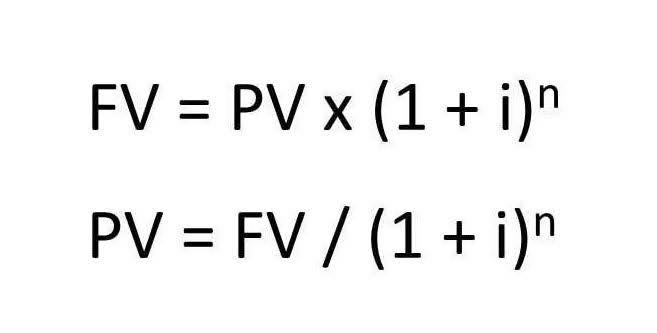
In a non-business context, goodwill refers to a kind and benevolent attitude one holds or displays towards others, often characterized by helpfulness and a desire for others’ happiness and well-being. The reason for this is that, at the point of insolvency, the goodwill the company previously enjoyed has no resale value.

Companies assess whether an impairment exists by performing an impairment test on an intangible asset. However, despite being intangible, goodwill is quantifiable and is a very important part of a company’s valuation. As you see, the amount of non-controlling interest (NCI) plays a significant role define goodwill in the goodwill-calculation formula. A non-controlling interest is a minority ownership position in a company whereby the position is not substantial enough to exercise control over the company. Over 1.8 million professionals use CFI to learn accounting, financial analysis, modeling and more.
More from Merriam-Webster on goodwill
IAS 38, “Intangible Assets,” does not allow the recognizing of internally created goodwill (in-house-generated brands, mastheads, publishing titles, customer lists, and items similar in substance). The only accepted form of goodwill is the one that acquired externally, through business combinations, purchases or acquisitions. While goodwill officially has an indefinite life, impairment tests can be run to determine if its value has changed, due to an adverse financial event.

In financial modeling for mergers and acquisitions (M&A), it’s important to accurately reflect the value of goodwill in order for the total financial model to be accurate. Below is a screenshot of how an analyst would perform the analysis required to calculate the values that go on the balance sheet. See’s consistently earned approximately a two million dollar annual net profit with net tangible assets of only eight million dollars. Because a 25% return on assets is exceptionally high, the inference is that part of the company’s profitability was due to the existence of substantial goodwill assets. If a company has a goodwill account, you can find it in the assets portion of its balance sheet.
synonym study For goodwill
Meanwhile, other intangible assets include the likes of licenses or patents that can be bought or sold independently. Goodwill has an indefinite life, while other intangibles have a definite useful life. This includes current assets, non-current assets, fixed assets, and intangible assets. You can get these figures from the company’s most https://www.bookstime.com/ recent set of financial statements. Goodwill is vital as it reflects a company’s intangible assets, contributing to brand value, customer loyalty, and competitive advantage. In listing goodwill on financial statements today, accountants rely on the more prosaic and limited terms of the International Financial Reporting Standards (IFRS).
However, they are neither tangible (physical) assets nor can their value be precisely quantified. The impairment results in a decrease in the goodwill account on the balance sheet. The expense is also recognized as a loss on the income statement, which directly reduces net income for the year. In turn, earnings per share (EPS) and the company’s stock price are also negatively affected. Under US GAAP and IFRS Standards, goodwill is an intangible asset with an indefinite life and thus does not need to be amortized.
Coca-Cola Company
Consider the case of a hypothetical investor who purchases a small consumer goods company that is very popular in their local town. Although the company only had net assets of $1 million, the investor agreed to pay $1.2 million for the company, resulting in $200,000 of goodwill being reflected in the balance sheet. In explaining this decision, the investor could point to the strong brand and consumer following of the company as a key justification for the goodwill that they paid. If, however, the value of that brand were to decline, then they may need to write off some or all of that goodwill in the future. When analyzing a company’s balance sheet, investors will therefore scrutinize what is behind its stated goodwill in order to determine whether that goodwill may need to be written off in the future.
- Goodwill can be challenging to determine its price because it is composed of subjective values.
- In some cases, the opposite can also occur, with investors believing that the true value of a company’s goodwill is greater than that stated on its balance sheet.
- The task of maintaining goodwill and mutual understanding between a company, its customers and the rest of the general public is usually undertaken by the Public Relations or Marketing department.
- Thus, there is a difference of $2 million between the amount of the goodwill calculated under the two methods.
- In a non-business context, goodwill refers to a kind and benevolent attitude one holds or displays towards others, often characterized by helpfulness and a desire for others’ happiness and well-being.
- Give that its components have subjective values, there is a considerable risk that a predatory company might overvalue goodwill in an acquisition.
The Financial Accounting Standards Board (FASB), which sets standards for GAAP rules, at one time was considering a change to how goodwill impairment is calculated. Impairment of an asset occurs when the market value of the asset drops below historical cost. This can occur as the result of an adverse event such as declining cash flows, increased competitive environment, or economic depression, among many others. Specifically, a goodwill definition is the portion of the purchase price that is higher than the sum of the net fair value of all of the assets purchased in the acquisition and the liabilities assumed in the process. Goodwill can be challenging to determine its price because it is composed of subjective values.
Scrabble Words Without Any Vowels
Accounting goodwill is sometimes defined as an intangible asset that is created when a company purchases another company for a price higher than the fair market value of the target company’s net assets. But referring to the intangible asset as being “created” is misleading – an accounting journal entry is created, but the intangible asset already exists. The entry of “goodwill” in a company’s financial statements – it appears in the listing of assets on a company’s balance sheet – is not really the creation of an asset but merely the recognition of its existence. Goodwill is a premium paid over fair value during a transaction and cannot be bought or sold independently.
- There is also the risk that a previously successful company could face insolvency.
- The only accepted form of goodwill is the one that acquired externally, through business combinations, purchases or acquisitions.
- Goodwill – an intangible asset – is the value of a business’ brand name, good customer relations, extensive customer base, excellent employee relations, and any proprietary technology or patents.
- Goodwill appears on the balance sheet as an intangible asset and is subject to periodic impairment tests, impacting the company’s overall valuation.
- The fair value of the assets was $78.34 billion and the fair value of the liabilities was $45.56 billion.

